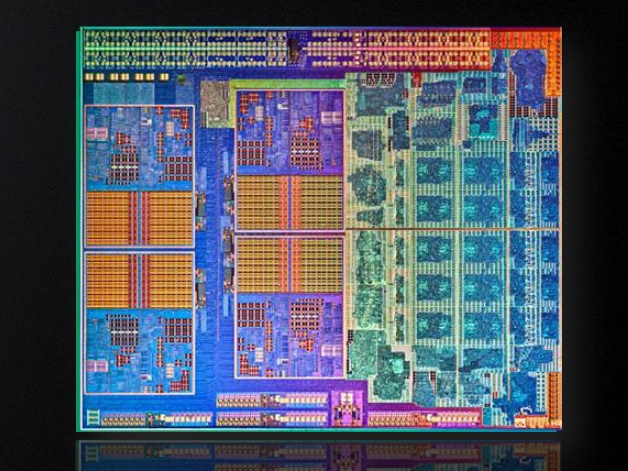Why you can trust TechRadar
The key factoid to fathom with the AMD A8-3500M is that it's AMD's first full-power Fusion processor combining CPU cores and graphics in a single chip. It's unambiguously a mobile processor designed for notebooks and laptops. The chip itself is codenamed Llano and contains four cores derived from AMD's Stars processor architecture. Stars is the processor core design found in existing AMD Athlon II and Phenom II CPUs.
AMD's first Fusion chips, the C and E Series APUs, sport AMD's Bobcat core. It's much more power efficient than the Stars core. But it also delivers much less performance. Of course, the use of the Stars core means much of the Llano chip isn't strictly new. But there's plenty that is.
For starters, Llano is AMD's first 32nm processor. Of course, Intel has been flogging 32nm CPUs for well over a year and is planning 22nm processors for early 2012. Still, better late than never for AMD's 32nm transistors.
The other really exciting news involves Llano's graphics core. With 400 DX11 shader cores, it's easily the most powerful integrated graphics core in the history of computing. For context, AMD's previous best was just 80 shader cores. Or, to put it another way, AMD's most powerful dedicated graphics chip as recently as 2007, the Radeon HD 3870, had just 320 shaders. It's a properly powerful bit of graphics hardware.
What it doesn't have, however, is the very latest AMD graphics gubbins, as seen in the Radeon HD 6900 series desktop cards. Instead, Llano's graphics is the slightly older graphics architecture first seen in the Radeon HD 5800. That means you get the so-called 4+1 ALU setup instead on the latest four-way symmetrical ALUs.
For the record, the rest of the Llano graphics core specification highlights include the full UVD3 2D video feature set and thus hardware acceleration support for all the important video codecs. Oh, and the minor matter of just 20 texture units, eight colour ROPs but only two render back ends. Still, the net result is raw number crunching throughput of 355 GFLOPS. Add in the four processor cores and you're looking at over 500 GFLOPS. It's quite a chip.
Other architectural interests go as follows. Both discrete graphics and AMD's Crossfire multi-GPU technology is supported courtesy of 16 on-chip PCI Express lanes. As for the supporting mobile chipset, it's packed with high-end features including six SATA 6Gbps ports and support for a pair of USB 3.0 sockets.
As a mobile chip, AMD has also ramped up the power-saving features. Which brings us neatly to the specifics of the AMD A8-3500M model tested here. Like most of the new A Series range, it's a quad-core processor. Seven A Series chips are available at launch, five quads and two entry-level dual-core models.
Where the power savings come in involves the 3500M's clocks. Nominally, it's a 1.5GHz processor, which isn't all that impressive. But thanks to a new version of AMD's Turbo Core feature, up to two cores can run at 2.4GHz. AMD has also added support for the power saving C6 idle state. Combine that with those tiny 32nm transistors and you have a mobile CPU AMD claims is capable of both excellent performance and 10 hours of battery life. But can it really be the best of both worlds in a single processor? Time to see how Llano performs.
Current page: AMD A8-3500M review: Specifications
Prev Page AMD A8-3500M review: Overview Next Page AMD A8-3500M review: BenchmarksTechnology and cars. Increasingly the twain shall meet. Which is handy, because Jeremy (Twitter) is addicted to both. Long-time tech journalist, former editor of iCar magazine and incumbent car guru for T3 magazine, Jeremy reckons in-car technology is about to go thermonuclear. No, not exploding cars. That would be silly. And dangerous. But rather an explosive period of unprecedented innovation. Enjoy the ride.
